Construction Equipment sector sees green shoots
In order to achieve the accomplished task in an efficient and effective manner, construction equipment & machinery and their selection plays a pivotal role. Lets have a glance at the contributing %ages of these equipment in the country’s economy. In what way top innovations fuel some of the key trends in 2018.
The activities involved in construction projects, where the magnitude of the work is on a large scale, fast working and timely completion of work with quality control become imperative .So in order to achieve accomplished work in an efficient and effective manner, mechanization of work has to be done, where construction machinery & equipment plays a pivotal role.
Proper use of appropriate equipment contributes to economy, quality, safety, speed and timely completion of the Project. Consequently, construction equipment is an important part of any construction process. Though it is not always feasible for the contractor to own each class of construction equipment required for the project, as the contractor has to economically justify whether to purchase the equipment or to lease it.
The amount invested in the purchase of Equipment should be recovered during the useful period of such Equipment.
The amount invested in the purchase of Equipment should be recovered during the useful period of such Equipment.
Moreover technological advancement is the need of every sector and this holds true for the Construction Equipment (CE) sector as well. While in the past decade, lot of technological advancements have taken place in the CE segment in the country, yet there is a long way to go.
Globally, India has become one of the key potential markets for Construction Equipment (CE). Further, it is estimated that by 2025, India’s construction market will emerge as the third largest in the world, which would exhibit huge demand for CE equipped with latest technology.
Timely completion of projects: Usually we see construction projects witnessing delays in execution. The main reason behind project delays is usage of less advanced machines. Hence, works in construction field can get smoother and faster with the help of equipment fitted with cutting-edge technologies, which can ensure project completion in given deadline.
Enhances brand value: If projects are completed on time using highly advanced equipment, the brand value of business increases in the market, which in turn can help in getting new clientele.
Improves accuracy: Engaging CE with latest technology also allows contractors to complete work with maximum accuracy.
Money saving and benefits : Enchanced yielding and the reliability of the advanced CE also translates into higher profitability from fewer defect-related claims and the avoidance of delay penalties.
Accomplish multiple tasks: An old equipment may not be capable of doing all the work but machine embedded with advanced technology can do similar work and may be few other tasks as well smoothly in less time.
Ensures nature friendliness: Generally CE equipped with latest technology are nature friendly and highly fuel efficient. Thus, they help in reducing CO2 considerably and help companies put their greener foot forward.
Ensures nature friendliness: Generally CE equipped with latest technology are nature friendly and highly fuel efficient. Thus, they help in reducing CO2 considerably and help companies put their greener foot forward.
In a nutshell High revenues and unit sales
Construction equipment industry in India is expected to reach USD5 billion by FY20 from USD3 billion in FY16, in value terms. While volume sale of construction equipment is expected to grow to 96,730 units by 2018 from 76,000 units in FY16.
In order to achieve the accomplished task in an efficient and effective manner, construction equipment & machinery and their selection plays a pivotal role. Lets have a glance at the contributing %ages of these equipment in the country’s economy. In what way top innovations fuel some of the key trends in 2018. The activities involved in construction projects, where the magnitude of the work is on a large scale, fast working and timely completion of work with quality control become imperative .So in order to achieve accomplished work in an efficient and effective manner, mechanization of work has to be done, where construction machinery & equipment plays a pivotal role. Proper use of appropriate equipment contributes to economy, quality, safety, speed and timely completion of the Project. Consequently, construction equipment is an important part of any construction process. Though it is not always feasible for the contractor to own each class of construction equipment required for the project, as the contractor has to economically justify whether to purchase the equipment or to lease it. The amount invested in the purchase of Equipment should be recovered during the useful period of such Equipment. The amount invested in the purchase of Equipment should be recovered during the useful period of such Equipment. Moreover technological advancement is the need of every sector and this holds true for the Construction Equipment (CE) sector as well. While in the past decade, lot of technological advancements have taken place in the CE segment in the country, yet there is a long way to go. Globally, India has become one of the key potential markets for Construction Equipment (CE). Further, it is estimated that by 2025, India’s construction market will emerge as the third largest in the world, which would exhibit huge demand for CE equipped with latest technology. Timely completion of projects: Usually we see construction projects witnessing delays in execution. The main reason behind project delays is usage of less advanced machines. Hence, works in construction field can get smoother and faster with the help of equipment fitted with cutting-edge technologies, which can ensure project completion in given deadline. Enhances brand value: If projects are completed on time using highly advanced equipment, the brand value of business increases in the market, which in turn can help in getting new clientele. Improves accuracy: Engaging CE with latest technology also allows contractors to complete work with maximum accuracy. Money saving and benefits : Enchanced yielding and the reliability of the advanced CE also translates into higher profitability from fewer defect-related claims and the avoidance of delay penalties. Accomplish multiple tasks: An old equipment may not be capable of doing all the work but machine embedded with advanced technology can do similar work and may be few other tasks as well smoothly in less time. Ensures nature friendliness: Generally CE equipped with latest technology are nature friendly and highly fuel efficient. Thus, they help in reducing CO2 considerably and help companies put their greener foot forward. Ensures nature friendliness: Generally CE equipped with latest technology are nature friendly and highly fuel efficient. Thus, they help in reducing CO2 considerably and help companies put their greener foot forward. In a nutshell High revenues and unit sales Construction equipment industry in India is expected to reach USD5 billion by FY20 from USD3 billion in FY16, in value terms. While volume sale of construction equipment is expected to grow to 96,730 units by 2018 from 76,000 units in FY16.
Private sector is emerging as a key player across various infrastructure segments, ranging from roads & communications to power and airports.
Growth in real estate sector
The real estate market is estimated to grow to USD180 billion by 2020 from USD126 billion in 2015, driven by demand mainly from residential sector.
Construction equipment analysis
Construction equipment forms around 7 percent to 8 percent of GDP & expected to give employment to more than 3.0 million people in the country by 2020. It also accounts for more than 60 percent in total infrastructural investment.
Some of the foremost construction tools and their blow-by-blow is listed below:
I. Cranes
Indian Industrial crane industry is definitely getting more & more customer oriented day by day. Since, the demands of customers are also evolving. Initially, the customer used to have a single line focus of only the pricing aspect without bothering a lot about the technical comparisons between different offerings. In today’s infra. Projects timelines are sacrosanct & commissioning schedules are closely monitored by the customer.
Moreover, a remarkable trend in this sector is that with several international tie-ups happening, the industry has started to have considerable global influence in terms of quality & use of better tech. Currently, Construction activity is strong across the Middle East, Sotiris Kanaris looks at the crane market and interesting projects in the region:
Huisman to build 1,000t crane for Japanese wind sector:
Huisman has been contracted to supply Japan’s second offshore wind crane, a 1,000t pedestal mounted crane, which will be used by customer Japan Marine United Shipyard to build a vessel for offshore wind turbine installation in Japan. The crane will be built and delivered at Huisman China, and installation will take place at JMU’s shipyard in Japan.
Tadano launches new global parts supply centre:
MT has launched a new knuckle-boom loader, the 42684. With a load moment of 305,580ft lb, the crane tops the company’s range in this line.
The 42684 is the newest addition to IMT’s portfolio of durably-designed loader cranes.
“Our newest hydraulic loader crane offers customers another option for precise handling and expert maneuverability of palletised materials in the building supply construction industries,” said John Field, product manager at IMT. “IMT designs our loaders to lift more, reach farther and last longer.” The 42684 has a maximum lift capacity of 10,500lb (4,763kg), up to 84ft of horizontal reach and a maximum vertical reach of 95ft.
Gruas Aguilar modernises crane fleet with seven new Liebherr cranes
Gruas Aguilar based in Madrid has purchased seven new mobile and crawler cranes from Liebherr. The cranes have lifting capacities ranging from 50 to 1200 tonnes enabling the Spanish crane and heavy haulage contractor to modernise its fleet. The order comprises one LTC 1050-3.1 compact crane, one LRT 1100-2.1 rough-terrain crane, two LTM 1130-5.1 mobile cranes, one LTM 1230-5.1, one LTM 11200-9.1 and one LR 1600/2-W narrow track crawler crane.
Mobile Cranes:
APEJ region to swing the global mobile cranes market by the end of the assessment period.
The mobile cranes market in North America region is anticipated to grow at a snail’s pace. The market will showcase lower growth potential within the period of forecast (2016 – 2026). But on the other hand the APEJ region will bloom, as the market spread across this region will gain momentum and will pocket more than 117 BPS by the end of 2026. Countries such as China, Taiwan, Indonesia, South Korea, India and Vietnam are expected to push the market ahead within the forecast period. The APEJ region will start slow but the market will catch pace after 2018. Countries such as India, China, Indonesia, Malaysia, and the Philippines will contribute significantly to the growth of this regional market. The Chinese economy has witnessed a sluggish growth in the last few years that will also impact the growth of this market. But the report suggests that the Chinese economy will limp back to normalcy after 2018 and will continue to soar till the end of 2026. The pouring demand of advanced infrastructural innovations from the residential and commercial construction industry and also the growing demand from civil engineering construction will affect the fabric of the global mobile cranes market.
The booming economy to change the scene of the mobile cranes market in the APEJ region
The Chinese market is expected to show a promising growth within the forecast period. It is predicted that China alone will hold more than 70% share of the mobile cranes market spread across the APEJ region. India will also play a crucial role in the overall growth of the APEJ mobile cranes market. India is expected to occupy more than 2% market value of the mobile cranes market in APEJ. Countries such as South Korea, Australia and New Zealand will also showcase standard development. These counties will play their part in the development of the regional mobile cranes market.
Several factors are impacting revenue growth of the mobile cranes market in the APEJ region
The political stability in this region, the fast-paced economy and a surge in the construction industry will push revenue growth of the mobile cranes market in the APEJ region. The massive wave of investment in infrastructure development in countries such as India, China, Indonesia and Vietnam will impel the growth of the mobile cranes market in this region. These countries are wooing foreign investors who are investing heavily in the development of roadways, new smart cities and urban infrastructure in these countries and this is contributing to the 360-degree development of the global mobile cranes market. As the APEJ region is passing through a massive industrialisation, the need for better equipment for high capacity lifting machines is in massive demand.
Backhoe Loader Infrastructure development beyond recession is usually characterised by its periodic nature. BHLs are expected to account for over 68.23 percent of total sales of CE by 2018. It is quite satisfactory to state that BHLs constitutes more than 65 percent of heavy earth moving equipment sales. The backhoe market in the country has been growing at a rate of close to 37% CAGR over last few years & this pace is likely to continue in the coming years too. The Asia-Pacific market including developing countries like India account for growth in the global heavy construction equipment sector as construction activities continue to increase in these regions. The Asia-Pacific construction equipment market including the backhoe segment is supposed to grow at a CAGR of 10.2 percent during 2015 to 2020.
Particularly, if we talk about India, it is the second largest market for backhoes in the world. “There is an active population of 195,000 BHLs in India.” In future, sales of BHLs in India is expected to increase from the 21,192 units sold in 2015 to 28,000 machines by 2020, a +32 percent increase, according to Off-Highway Research. The market for backhoes is spreading eastwards, largely due to the way in which India is making progress in the infra & construction segment. Most of the tech. leaders like JCB, Mahindra, Escorts Construction Equip., Terex, Case, Caterpillar, TATA Hitachi, ACE, Lee Boy, BEML, Bull, etc., are present in India either as JV COS have set up their own manufacturing facilities or marketing COS. All backhoe loaders sold in India are manufactured in the country.
Hitachi says we are seeing more irrigation and infrastructure spends across sectors. Backhoe loaders are used in practically all infrastructure projects and new account for nearly half the construction equipment industry’s sales by value and volumes. With our infrastructure still needing substantial investments, the backhoe loader market is expected to retain a decent growth rate into the future. This scenario presents us with a huge market opportunity with our large distribution network that can address this market.
Our new backhoe loader is able to work at the deepest and toughest of job sites. Its hydraulic system is fuel efficient by making oil flow only when require Now-a-days,it is possible to track all machine parameters like location, operational parameters, machine health and services, accessed via mobile phones INSITE, Tata Hitachi’s telematics suite. Its driveline is designed for loading and dozing as it maximises the tractive effort.
Moreover service & Quality of Service are two critical aspects in the backhoe loader industry. Customer service will always provide the critical competitive advantage of translating users into repeat customers. They not only buy your product repeatedly, but also showcase their trust in you, in your product & in your service. Apart from service & quality CE sector in India has evolved over the years and is at present in an intermediate stage of development, since the major factor that adds to the versatility of a backhoe loader is the development in number of applications it can work in with the help of attachments. Buckets at both the loader end and backhoe end can be replaced with a host of attachments like pallet forks, rock breaker, jib crane, sweeper collector, auger, six-in-one clam shovel bucket, ripper tooth, jaw bucket, ditch cleaning bucket, taper ditching bucket, bucket mounted forklift etc. Hence, a construction and earthmoving machine can be used in several other applications like solid waste management and material handling. However, the percentage of sales budgeted for R&D is merger ranging from 0.5-3% of sales. Although many of the manufacturers have established full-fledged R&D units to update their products or technologies, the industry in India does not invest adequately in R&D activities compared to world leaders like Volvo or Komatsu, as the existing market cannot absorb the development costs
Business drivers and outlook seems to be a new urgency for action in the equipment zone as witnessed by the slew of govt. initiatives to reform procedures and policies around infra investment, which in turn has spurred the fast-tracking of projects.
After a 3-year lull, backhoe loaders are expected to see a pickup in business volumes. Across the Great Indian Dust Bowl, the market for the good old tractor-digger, aka the backhoe, has fast begun to gather pace. After a 2-year lull in the construction and infra sector which saw a slowdown in both scale and speed of project implementation and a decline in construction equipment hire and purchase, Indian backhoe loader sales is slated to pick up momentum along with the green shoots of economic recovery. Understandably JCB, which introduced its backhoe loaders in India 37 years ago its factory in Delhi NCR is now a global hub for production is expected to play a leadership role. A market leader, JCB India offers a range of backhoe loaders with 5 variants designed for multiple applications. These range from the Compact 2DX, the bestselling 3DX with the variants; 3DX Xtra , the 3DX Super and finally, the larger 4DX. All these machines come with a variety of attachments to suit the varied needs of customers. All these machines come with a variety of attachments to suit the varied needs of customers. The govt’s renewed thrust in the infra segment has led to a considerable increase in the demand for backhoes which are the most widely used equipment in the country. JCB has been a major contributor to the make in India cause through its products which carry with them cutting edge technology and versatility.
Wheel Loaders
The wheel loader market is in the midst of a transformation, with technology serving the entire industry. Increase in comfort and convenience of cabs. According to a research by Future Market Insights (FMI), the global compact wheel loader market is expected to reach a valuation of over US$ 314 Million by the end of 2026. It is projected that the global compact wheel loader market will grow at a CAGR of 2.5% during the assessment period 2017-2026.
Komatsu Europe launches WA100M-8 Compact Wheel Loader
The new Komatsu WA100M-8 Compact Wheel Loader proposes new and improved features. It provides effortless and low-cost operations with a powerful EU Stage IV engine. On construction sites, in the recycling industry or for agricultural jobs, with the hydraulic quick-coupler, Easy Fork kinematic and a wide range of available attachments, the Komatsu WA100M-8 is a reliable and versatile tool.
The market trends are such that stipulation for wheel loaders is possible to go up exponentially in the next few years. The Indian market has always presented manufacturers with an exceptional challenge. Manufacturers had to bring in the latest tech. & yet be cost competitive here. A requirement is greatest for compact wheel loaders in load-and-carry operations on ready-mix concrete plants, quarries, & ports. Besides, with the government pushing for the building of more roads in India, wheel loaders will go on to sell well.
Wheel loaders account for around 4% of the sales construction equipment.
200 hp( over 5 MT payload) in demand for mining and post sectors.
100-150 hp(3 MT payload) category accounts for over 75%.
The market for wheeled loaders is directly linked to the levels of activity in the construction & mining sectors, which account for over 80% of the demand. Off- Highway Research is quite optimistic about the growth in demand for wheeled loaders & expects the market to grow to 3,200 units by 2020. Generally, wheeled loaders of over 200 hp (over 5 MT pay load) are more in demand from the mining & port sectors. However, a large number of 100-150 horsepower (3 MT pay load) machines are also used in the applications. Caterpillar offers the complete range of wheel loaders in India; right from 3T all the way up to 38T. However, for ports, with the parameters of utilization, amount of material handled, fuel efficiency & space constraints, 950GC & 966H would be ideal. Loaders in India are expected to record the highest growth among the various construction & earth moving equip. According to a new report by Allied Market Research titled Global CE Market – size, industry analysis, trends, opportunities, growth & forecast, 2014-2020, the global CE market is expected to reach USD 240.97 billion by 2020, registering a CAGR of 8.9% during 2015-20. Of the various CE used, it is the loader market that is expected to grow the most until 2020, contributing more than 44% of the total market review.
Further wheel loaders in the USA have moved to the Tier 4 Final level of emission compliance. In India, the emission compliance level is Tier III, which is equivalent of BS III, & Tier III A. The future influx of tech. according to an expert will be in the area of drivetrain. Engines will be more powerful yet cleaner & there is a possibility of new transmissions to enter, he added .Higher efficiency engines, the expert opinions, would help the machine offer higher breakout force & digging depth, a quality that is most appreciated by the Indian operator& considering the Indian conditions.
Crawler Excavators
Global demand for crawler excavator is expected to grow, being influenced by the growth of mining and construction sectors .Over the years, usage of crawler excavators has expand to a significant extent in this sector. Future Market Insights (FMI) projects that the global crawler excavator market will exhibit a CAGR of 2.7% during the assessment period (2017-2026). Crawler excavators are becoming increasingly popular in construction as they allow faster and safer removal of debris. Also digging procedures have become much simpler and easier .Moreover, the arrival of more technologically advanced crawler excavators is also driving their adoption across sectors.
APEJ Will Remain the Most Attractive Market for Crawler Excavator Over 2026.
Asia Pacific excluding Japan (APEJ) is expected to spearhead the global crawler excavator market during the forecast period. Factors which majorly contributes to the market opportunities in the APEJ regions are industrialization and urbanization. APEJ’s market is projected to exhibit a CAGR of 3.2% between 2017 and 2026.
Short Trail a Leading Product Type.
Short trail crawler excavators continue to gain popularity in various end-use industries. This is primarily owing to their cutting-edge features and high efficiency. Global sales of short trail crawler excavators currently accounts for more than 32% revenue share of the market. By the end of assessment period, nearly US$ 76 Million worth short trail crawler excavators are estimated to be sold across the globe.
Medium (2.00-4.00) Bucket Capacity Crawler Excavators to Remain Sough-After.
Preference for crawler excavator with medium (2.00-4.00) capacity is expected to remain delighted throughout the assessment period. By the end of 2026, close to US$ 93 Million worth medium (2.00-4.00) capacity crawler excavators are expected to be sold globally. In terms of revenue, currently it represents for around 40% market share.
Crawler Excavators with Operating Weight of 22,650-30,200 Kg Will Remain Extremely Popular.
After recovering from a fall in market of construction and mining industry, India acquired CDA Asia with the leading materials washing company, the desired opportunity for the growth and expansion. The reason for its enlargement is basic, CDE India connects with the market. The business persons from the dissimilar territories but associated with the same industry fully understand sand and washing utility of the territory and offers a knowledge based services to their clients. Aided by the expert CDE designer and engineers.
New Washing Equipment With in Crusher Circuit at Hillhead 2018
Morris, Minn. – Superior Industries, Inc., a U.S. based manufacturer and global supplier of bulk material processing and handling systems, plans to show its new Alliance™ Low Water Washer in stand CE16 at Hillhead 2018. A first of its kind for aggregate producers, the unique low water washer is capable of accepting a dry feed directly within a crushing circuit. These fines are then pressure washed and dewatered for production of sellable manufactured sands. “Historically, all of the machinery used to wash crusher fines has a been traditional sand screw,that typically means material producers are handling and hauling the material to a separate wash site, which adds cost quickly. During operation, an agitator section accepts the feed where it is mixed with water to produce a thick slurry. This slurry is then dumped onto a dewatering screen with a series of spray bars to help clean and wash out the fines. The end result is a saleable manufactured sand with just 8% moisture content. The alliance low water washer is designed specifically for washing crusher fines and uses 80% less water than the traditional screw/screen combination. Superior manufactures models of its new alliance low water washer for rates up to 272 MTPH (300 STPH). custom designed machines can produce higher rates if required.
Paver Machines
Paver manufacturers are contributing a wealth of asphalt and concrete laying and composition solutions and covering the entire product value chain. Marking by wide reaching, asphalt and concrete road projects, paver manufacturers are expanding and enhancing their product range to offer faster productivity, better quality, application flexibility and competitive pricing, along with the required efficient servicing of their apparatus. The paving equipment market is largely driven by the increase in spending on road infrastructure. Countries such as the U.S., China, Japan, Italy, India, Australia and Germany have vast road networks to connect major cities and country with minimum commute time. This largely optimizes the transportation costs and connects cities and boosts commerce. Roads are lifelines during emergency and well spanned network of roads increases trade. This, in turn, propels the economy. Furthermore, paving machines reduce the cost of construction as they make optimum use of materials and are precise at maintaining road or concrete pavement screed height and thickness.
Volvo P4370b Paver’s Productivity Helps Complete Maharashtra Road In Record Time
In four months, the Volvo paver helped Indian construction contractor Deshmukh & Co. finish a 130 km road from Aurangabad to Dhule in western India. India is building roads at an unprecedented rate. Since 2014, the country has laid 28,000 km of highways at a cost of nearly Rs 3 lakh crore (US$43.6 billion). In the next four years, the country is expected to add 83,000 km more roads as part of a national highway construction program. One of the latest projects is the redevelopment of a 130 km road from Aurangabad to Dhule in Maharashtra. Deshmukh & Co., the Maharashtra-based road construction contractor for the project, says the Volvo P4370B paver is playing a vital role behind the project’s quick completion. Volvo says “Believe it or not, we completed this project in four months. Sounds impossible, doesn’t it? But we did it thanks to the Volvo P4370B paver. Volvo machines have high uptime and rarely give us any trouble at all.
Sensor paver machines
Sensor pavers are expected to have a smooth ride due to the demand for quality roads in the future. Sensor paver role is significant in order to reach the required levels and grades while constructing roads. The final finish of a road depends to a great extent on the precision carried via these pavers in addition to the mix quality and temperature at which they are laid and compacted. According to figures about 4,800 units of compactors and pavers were sold in the Indian market in 2017. Road construction accounted for 8 percent of this volume. Growth in 2017 was 23 percent higher than 2016; and the expected growth scale is 20 percent in soil, asphalt and mini tandem sales by2018 and 15 percent growth in paver sales. The government plans to invest Rs 7,000 billion ($108 billion) to build 83,677 km of roads in the next five years and increase road construction from about 23 km a day to 40 km a day, have made road pavers, particularly sensor pavers. Of all the infrastructure sectors driving demand for compactors - comprising of roads and highways, mining, real estate, power, railways - the leading sector is currently roads and highways with many large-scale projects being implemented, JCB India, which offers three world-class products in road construction solutions: The VMT330 (a 3T-class mini tandem roller), the VMT 860eco (a 9T-class tandem roller) and the JCB116 (a 11T-class soil compactor). ‘’Irrigation and water conservation are fast picking up and emerging as growth drivers.
Road Roller
Global Road Roller Market is Expected to grow CAGR of 5.1% with Technological Growth and Up-gradations 2018 to 2022. The road construction machinery market has witnessed significant growth in the recent past, owing to the increased road development programs undertaken by the central and state governments, especially in Asia-Pacific countries. Growing demand from the irrigation industry, increasing number of upcoming highway construction projects and advanced vehicles equipped with emission control systems are some of the factors expected to drive the construction machinery market over the forecast period. The demand for machines that are cost-effective, along with regulatory pressures for lower emissions, is pressurizing construction-equipment manufacturers to opt for electric and hybrid vehicles over the traditional hydraulic and mechanical ones. The Great Man-Made River (GMR) project in Libya has been working since 1985, to irrigate more than 350,000 acres of arable land and is scheduled to complete by 2030. Dubai has undertaken a project to improve its economy by constructing Dubai land, which includes sports venue, theme parks, eco-tourism, health facilities, science attraction, and hotels, in 278 km by 2025. Moreover, this project is in the process of employing advanced automated construction machinery. The increase in the number of smart cities will primarily impact the growth of the demand for road construction equipment. Also, the growing urban population has put pressure on existing urban services, like public transport and road networks. This has led to the increase in the number of smart cities to accommodate the increasing urban population. The maximum number of road networks in these cities are anticipated to have concrete paved roads since they can reduce the fuel consumption of vehicles. This will, in turn, fuel the market’s growth prospects in the coming years. Asia-Pacific is expected to be the primary revenue contributor to the market. There is growth in the demand for concrete and road construction equipment from developing countries due to growing populations. The governments of several states have already announced the construction of many large-scale road networks by 2025 to connect different cities and to meet the requirement of the increasing urban population. Moreover the product market is segmented, based on product type, application and geography. Based on product type, it is divided into static road roller, tire road roller, single drum vibratory road roller, double drum vibratory road roller, and others. By geography, it is analyzed across North America, Europe, Asia-Pacific, and LAMEA. Key players operating in the market include Caterpillar, J C Bamford Excavators Ltd., BOMAG GmbH, Wirtgen Group, Speedcrafts Limited, XCMG Construction Machinery Co., Ltd., Xiamen XGMA Machinery Co., Ltd., Changlin Company Limited, Liugong Machinery Co., Ltd, SANY Group.
Material Handling Equipment
Material handling equipment (MHE) industry is all set to grow. The manufacturing unit has seen many evolutions in recent era which have spurred a non-stop stream of innovations at each stage of the value chain. People everywhere wants to take the benefits of these developments by leveraging technology to enhance productivity and revenue. The current industrial revolution is refurbishing business and because of these advancements, there is a constant growth in the degree by which these business are automating. Industrial robots which were once perceived as mute machines merely used for reducing drudgery that human operator goes through while performing monotonous activities are now turning smarter day by day. Due to the dependency of AGVs over some additional infrastructure like magnetic tapes, QR codes, RFID tags etc for the purpose of navigation and locomotion, the utility of these vehicles was very limited. But with the onset of Industry 4.0, we have started observing a shift towards adoption of systems which are much independent in nature rather than being just “Automate” and this shift is quite apparent in same segment also. Global demand for materials handling equipment is expected to reach $176 billion by 2020.Global demand for materials handling equipment forecast to rise 5.3% per year, spurred by new demand in China and developing countries. A study projecting global demand for material handling equipment suggests China will account for nearly two thirds of all new demand by the year 2020. Mature markets like the United States, Japan and Western Europe are expected to see restrained growth over the same period as compared to developing countries. We can say that the period is an exciting time for the Material handling industry as industry is flourishing with the current passage.
Innovation in material handling for industrial manufacturing
Industrial manufacturing for material handling is changing at an unparalleled pace in Indian market. Days which were considered in isolation by each location are gone long. With supply chains getting more and more integrated, customers are looking at these systems end-to-end. Goods will also need to travel longer distances between fewer locations. This combined with the revised plant networks, will necessitate the adoption of modern materials handling practices in order support the increased volume. All this subtract in cost reductions thus improve efficiencies. The manufacturing output of the companies are growing at the rate 2.6 to 57.5 for the 26th consecutive months overall economy now having grown for 114 consecutive months as per reports. EnerSys’ participation in the program represents a first step toward the development of more collaborative power solutions with Toyota Material Handling, U.S.A. EnerSys, a global leader in stored energy solutions for industrial applications and Toyota Material Handling, U.S.A. (TMHU), a leader in material handling and industrial lift equipment, have announced that EnerSys battery and charger solutions for material handling applications will available in the STARLIFT Parts Program beginning November 1, 2018. Nuvera is proud to present its Hydrogen Pioneer Award of 2018 to Wheeler Material Handling (WMH). years ago, WMH had a vision for zero emissions technology and the role it could play in this exciting new future. This vision was a motivating factor for them to work alongside Nuvera and Hyster-Yale is introducing hydrogen fuel cells to the market. Because of this commitment, WMH has become an important strategic partner in helping Nuvera realize our goals in bringing fuel cells to market. Their work demonstrates a desire to build the industry and achieve market wide adoption of fuel cell technology.
Mining Equipment
Mining sector is considered as a crucial sector of the world economy as it promotes employment opportunities and also provide numerous resources to many industries. According to research & analysis, the global mining equipment market is expected to garner $155.9 billion by 2022, registering a CAGR of 7.9%during the forecast period of 2016-2022. The industry is currently experiencing a positive phase, with commodity prices rising and augmenting the demand for raw materials. Majorly, mining of high priced metals like gold, copper, and other ores are expected to drive the market. Rapid adoption of automation technology has also resulted in increased usage of smart mining solutions. Leading companies in the mining equipment market such as Caterpillar Inc.; Metso, Komatsu Ltd.; Joy Global Inc. Inc. Sandvik; Hitachi Co. Ltd., and others, have contributed to a significant growth in the past few years in the same sector, by launching Innovative products, such as remote-controlled mining equipment and by many other initiatives. Mining drills and breakers is the fastest growing segment, followed by crushing, pulverizing and screening equipment. Asia-Pacific is anticipated to be the largest market of mining equipment during 2016-2022.Countries namely, India, China, Australia and Indonesia are likely to be the chief revenue generating countries in Asia-Pacific.
HD1500-8 dump truck drives down haulage costs through higher production, improved fuel efficiency and better maintainability.
Komatsu has released the HD1500-8 mechanical drive dump truck, a 142 metric tonne capacity hauler designed to reduce cost per tonne through such features as highest payload in its class, faster cycle times, improved fuel efficiency, longer component life and enhanced maintainability.
Fuel efficiency is improved through a number of engine management and control features, including:
Improved hydraulic pressure management for the transmission system Komatsu “on demand” energy saving technologies, such as variable displacement pumps for the steering and hoist circuits.
Operator feedback systems, including ECO fuel saving guidance on the in-cab monitor to encourage more fuel-efficient operation.
Operator selectable operating modes, with a choice of “Power” or “Economy” mode depending on operating conditions and haul road profile.



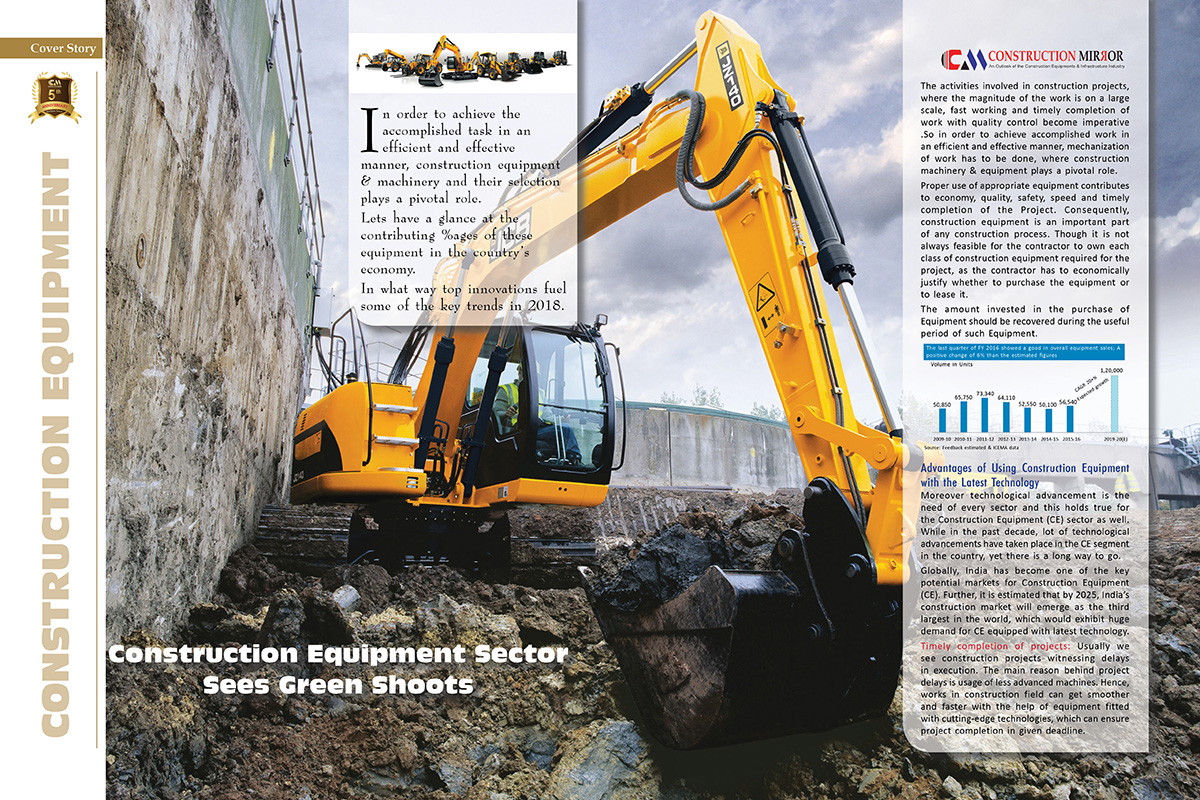
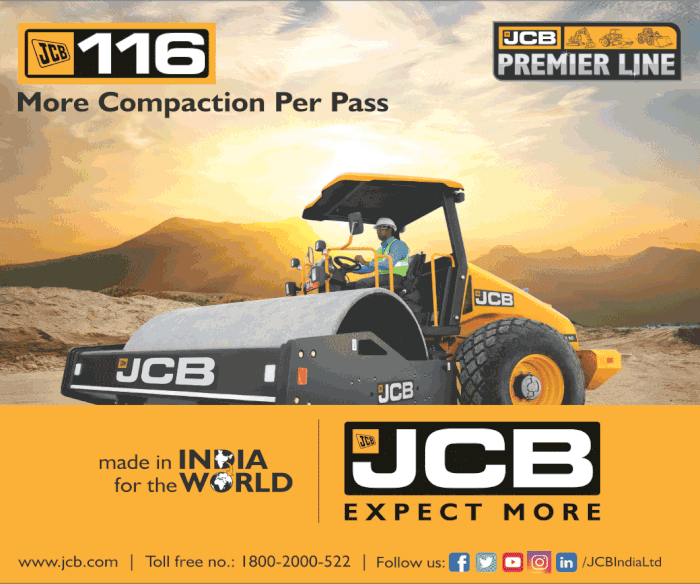
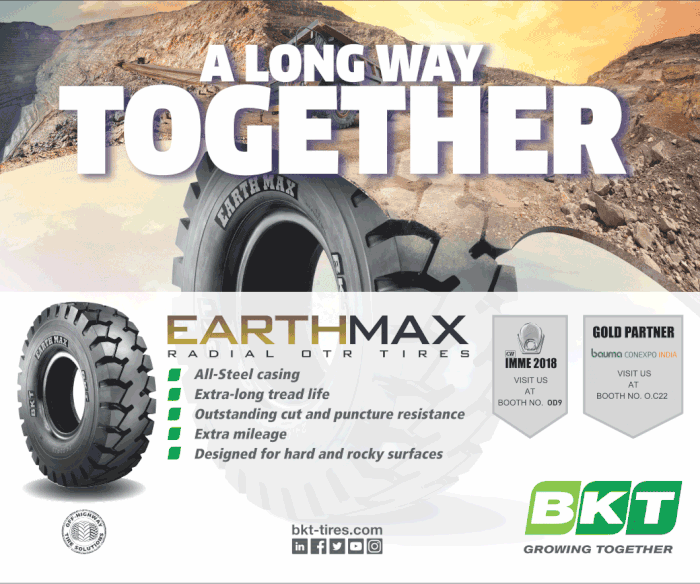
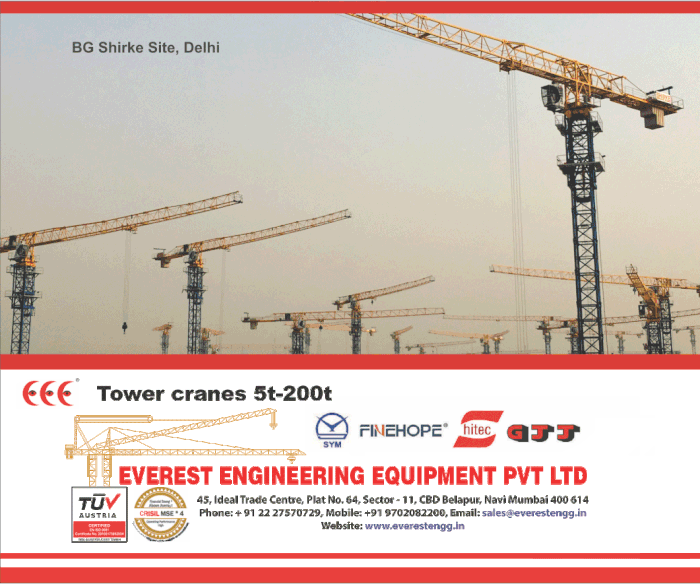
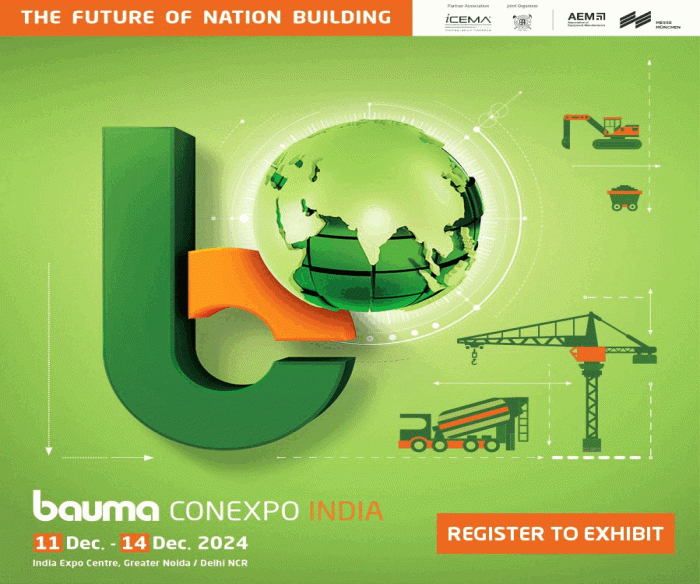
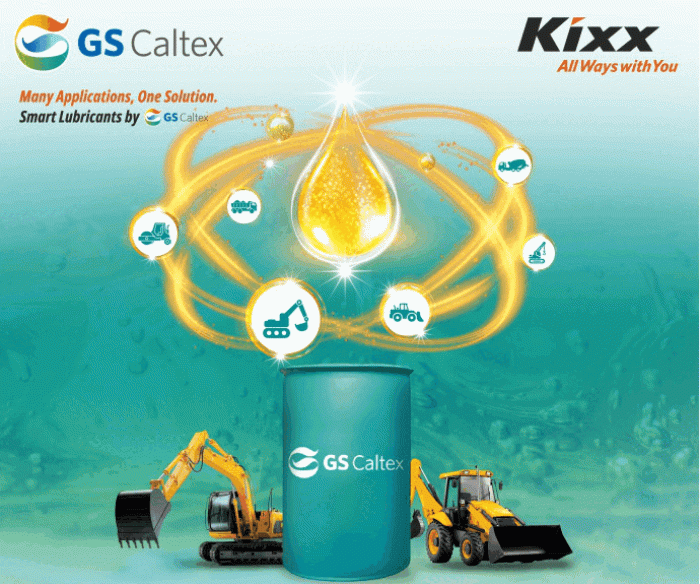
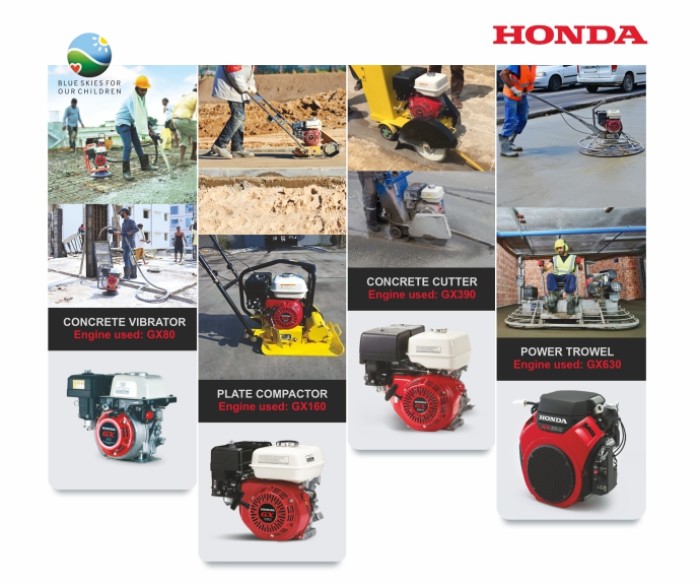
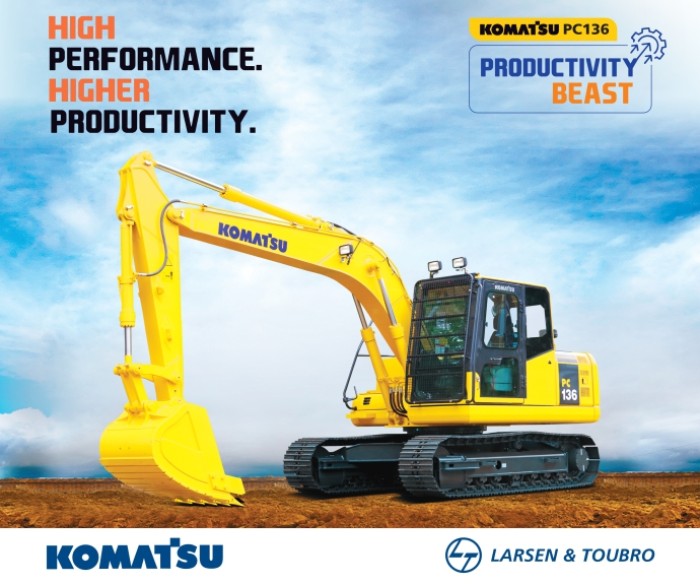
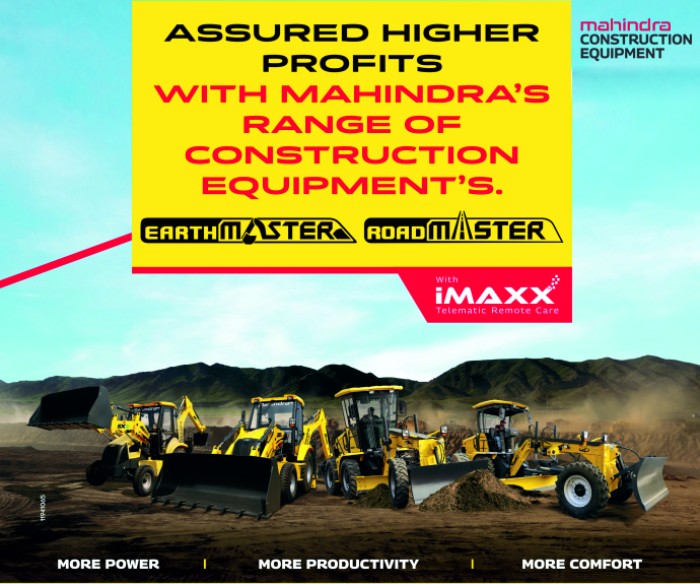
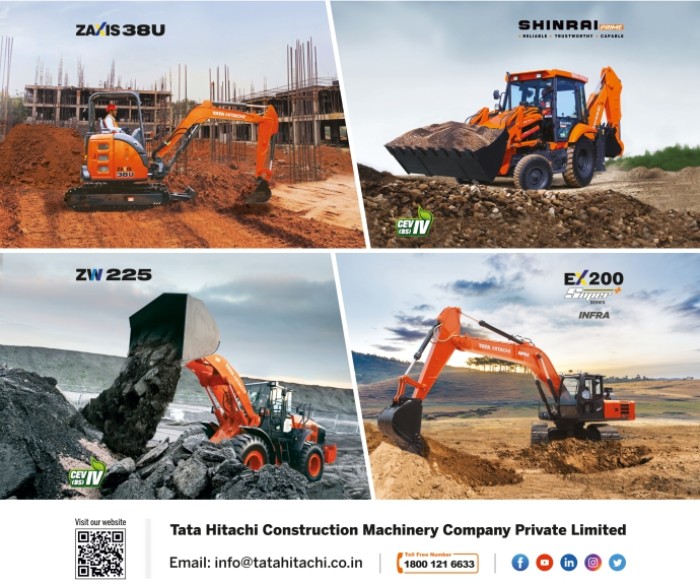



Leave a comment